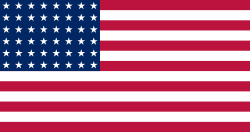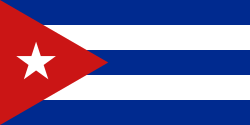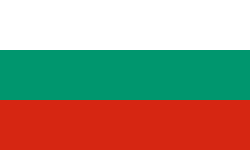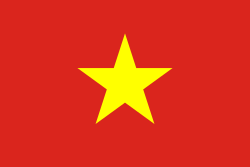Oksen Mirzojan
| Oksen Mirzojan | |
|---|---|
 | |
| Osobní informace | |
| Datum narození | 11. června 1961 (63 let) |
| Místo narození | Angeghakot |
| Děti | Arakel Mirzoyan |
| Některá data mohou pocházet z datové položky. | |
| Přehled medailí | ||
|---|---|---|
| zlato | 1988 Soul | váha do 56 kg |
| Mistrovství světa ve vzpírání | ||
| zlato | 1983 Moskva | váha do 56 kg |
| stříbro | 1982 Lublaň | váha do 56 kg |
| stříbro | 1985 Södertälje | váha do 56 kg |
| bronz | 1986 Sofie | váha do 56 kg |
| bronz | 1987 Ostrava | váha do 56 kg |
| Mistrovství Evropy ve vzpírání | ||
| zlato | 1983 Moskva | váha do 56 kg |
| stříbro | 1982 Lublaň | váha do 56 kg |
| stříbro | 1985 Katovice | váha do 56 kg |
| stříbro | 1986 Karl-Marx-Stadt | váha do 56 kg |
Oksen Mirzojan (Օգսեն Միրզոյան, * 11. června 1961 Angeghakot) je bývalý sovětský vzpěrač arménské národnosti. Soutěžil v bantamové váze a připravoval se v klubu Dynamo Jerevan pod vedením trenéra Ašota Vilasjana.
V sovětské reprezentaci debutoval v roce 1980. Čtyřikrát se stal vzpěračským mistrem SSSR (1982, 1983, 1988 a 1991) a dvakrát vyhrál Spartakiádu národů SSSR (1983 a 1991). V roce 1983 vyhrál mistrovství světa ve vzpírání i mistrovství Evropy ve vzpírání. Na světovém šampionátu získal také dvě stříbrné (1982 a 1985) a dvě bronzové (1986 a 1987) medaile a na mistrovství Evropy skončil druhý v letech 1982, 1985 a 1986. Kvůli sovětskému bojkotu Letních olympijských her 1984 v Los Angeles se zúčastnil soutěže Družba 84, kde skončil druhý za Naimem Sulejmanovem. Na Letních olympijských hrách 1988 získal zlatou medaili poté, co byl původní vítěz Mitko Grablev z Bulharska diskvalifikován za užití furosemidu.[1] Ve své kariéře vytvořil dvanáct světových rekordů.[2]
Nezávislou Arménii ještě reprezentoval na MS 1993, kde obsadil šestou příčku. Pak ukončil aktivní kariéru a stal se trenérem, zastával také funkci předsedy Arménského vzpěračského svazu a místopředsedy Národního olympijského výboru Arménie.
Vzpírání se věnoval také jeho syn Arakel Mirzojan, který získal v roce 2009 titul mistra Evropy ve váze do 69 kg.
Reference
- ↑ Olympic Statistics Dostupné online
- ↑ Lift Up Dostupné online
Externí odkazy
 Obrázky, zvuky či videa k tématu Oksen Mirzojan na Wikimedia Commons
Obrázky, zvuky či videa k tématu Oksen Mirzojan na Wikimedia Commons - Общество «Динамо»
Média použitá na této stránce
Olympic Rings without "rims" (gaps between the rings), As used, eg. in the logos of the 2008 and 2016 Olympics. The colour scheme applied here was specified in 2023 guidelines.
Olympic Rings without "rims" (gaps between the rings), As used, eg. in the logos of the 2008 and 2016 Olympics. The colour scheme applied here was specified in 2023 guidelines.
US Flag with 48 stars. In use for 47 years from July 4, 1912, to July 3, 1959.
this is the flag of the Soviet Union in 1936. It was later replaced by File:Flag of the Soviet Union (1955-1980).svg.
(c) I, Cmapm, CC BY-SA 3.0
The flag of the Soviet Union (1955-1991) using a darker shade of red.
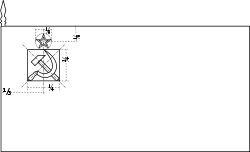
(c) I, Cmapm, CC BY-SA 3.0
The flag of the Soviet Union (1955-1991) using a darker shade of red.

Autor: Scroch, Licence: CC BY-SA 3.0
Flag of Bulgaria (1971-1990). Flag of Bulgaria with Bulgarian coat from 1971.
Autor: Scroch, Licence: CC BY-SA 3.0
Flag of Bulgaria (1971-1990). Flag of Bulgaria with Bulgarian coat from 1971.
Flag of South Korea from 21 February 1984 to 15 October 1997, when the exact colors were specified into their shades.
Flag of Iran. The tricolor flag was introduced in 1906, but after the Islamic Revolution of 1979 the Arabic words 'Allahu akbar' ('God is great'), written in the Kufic script of the Qur'an and repeated 22 times, were added to the red and green strips where they border the white central strip and in the middle is the emblem of Iran (which is a stylized Persian alphabet of the Arabic word Allah ("God")).
The official ISIRI standard (translation at FotW) gives two slightly different methods of construction for the flag: a compass-and-straightedge construction used for File:Flag of Iran (official).svg, and a "simplified" construction sheet with rational numbers used for this file.
Chinese Taipei Olympic Flag. According to the official website of Chinese Taipei Olympic Committee, Blue Sky(circle) & White Sun(triangles) above the Olympic rings is neither the National Emblem of the Republic of China, nor the Party Emblem of Kuomintang (KMT), but a design in between, where the triangles do not extend to the edge of the blue circle, as registered at International Olympic Committee in 1981 and digitally rendered in 2013. Besides, the blue outline of the five-petaled plum blossom is broader than the red one. Moreover, the CMYK code of the blue one and the Blue Sky & White Sun is "C100-M100-Y0-K0", and different from the Olympic rings (C100-M25-Y0-K0). Note that it's the only version recognized by IOC.
bendera Indonesia
Sport - Olympic Champions - Oksen Mirzoyan

